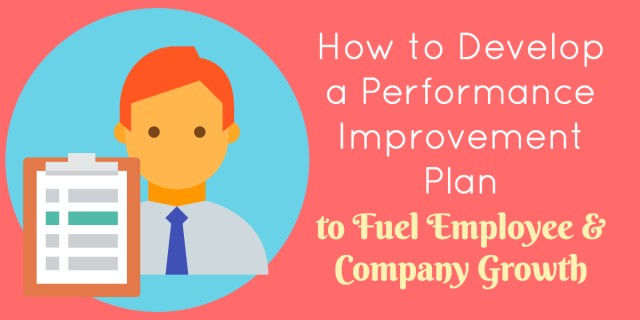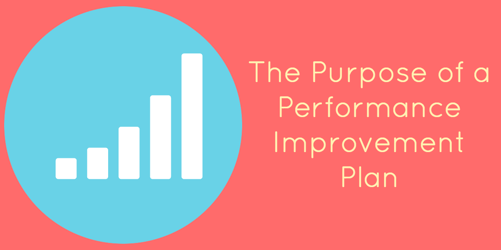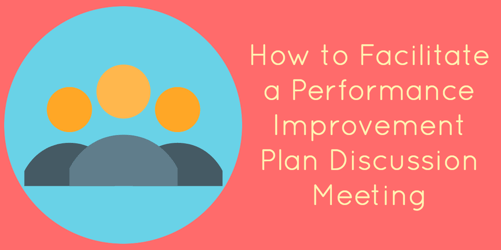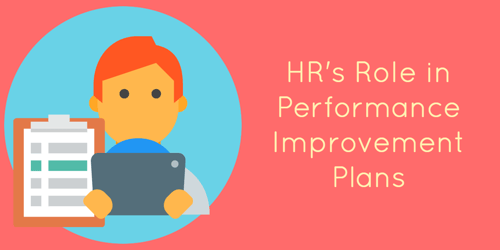How to Develop a Performance Improvement Plan to Fuel Employee & Company Growth

By John Duval
How do you help employees reach their greatest potential? How do you help those you know could be performing so much better than they actually are? Can you identify gaps in training or communication among roles and hierarchies?
You may conduct annual performance reviews with your employees or have some type of time-based evaluation system at your company.
What protocol do you have in place to actually do something about struggling employees?
Many companies use Performance Improvement Plans to, as the name suggests, improve performance. Think of this plan as the next step from a performance review for employees with poor performance. Rather than evaluating an employee and saying what’s wrong, you make a plan. That plan helps the employee improve and succeed both personally and professionally.

What is the purpose of a Performance Improvement Plan?
What is a PIP in the workplace and why use it? A Performance Improvement Plan (PIP) is a tool for HR to facilitate employee improvement. This improvement plan should benefit the company as a whole. The plan should also support personal and professional improvements for the employee and staff.
A PIP helps under-performing employees reach their full potential by providing measurable goals and active support from management and HR.
You may not always be able to determine why an employee’s performance suffers. Factors may range from poor training or misunderstanding of role and responsibilities to personal problems—financial, health, or relationship. A PIP should facilitate productive discussion between an employee and supervisor or HR manager.
Performance Improvement Plans are not meant only for employees with poor performance. Using a PIP can be a good way to help a new hire understand the standards and expectations in their role. They can also learn about the expected progress in a determined timeframe.
How do you know when to use a Performance Improvement Plan?
You may have an employee who received a poor performance review or complaints from managers or staff. Maybe you notice an employee struggling in a certain area. Even a single incident may cause you to question an employee’s ability to perform in the future.
There are many reasons you may seek out ways to help your employees who may not merit termination but could use improvement to remain an engaged employee.
Some circumstances may need you to make your best judgment about performance. Is it lack of motivation or training? What could change to help the issue?
Before assuming the worst about an employee, try to first see if the employee has an accurate understanding of their role. Do they have access to resources they need to accomplish their duties? Is there anything else that may be hindering performance beyond just laziness or apathy?
Asking these questions will help identify the next steps for an employee. After a PIP, you may see a variety of outcomes including performance improvement, skills recognition, identifying communication errors, demotion, transfer, or termination. No matter the outcome, a correctly-executed PIP can improve the company and your staff.
HR’s role in Performance Improvement Plans
Responsibilities for PIPs differ among organizations and leadership structures. As a general rule, an HR manager should:
- Provide reason and evidence (with documentation) for why the employee is being placed on a PIP.
- Advise employees of their rights in the situation.
- Develop an action plan for the employee and the employee’s manager.
- Help provide any resources that may the employee needs to meet the goals of the PIP. This could include making arrangements for training and support.
- Provide necessary information to managers about the PIP, the employee, and offered support.
How to develop a Performance Improvement Plan for an employee
A lot goes into a Performance Improvement Plan before the actual meeting takes place. Take a moment to think about the purpose of your meeting. What is the goal? What message or understanding do you want the employee to leave with?
When you schedule your meeting, allow plenty of time for discussion. This meeting discusses matters of a person’s career and contribution to the company. This isn’t anything you want to rush.
When you develop an employee’s PIP, follow these steps:
- Identify the performance or behavior that needs improvement.
- Provide specific examples of the poor performance or behavior.
- Discuss reasons that could be causing this behavior. Search for any tools, resources, or understanding that may help the employee improve.
- Create an action plan for improvement with set goals for the employee.
- Determine a time to review the employee’s progress in the plan.
- Communicate any consequences that may occur if the employee does not meet the goals identified in the PIP.
Remember, this is a collaborative process with your employee. Allow them to offer insight and feedback into the process. This can help you identify the cause of the issue, set attainable goals for the employee, and determine what the proper next steps should be.

How to Facilitate a Performance Improvement Plan Discussion Meeting
At the start of your meeting, establish the expectations and goals. (Hint, you’ve already done this for yourself, just share that with the employee.) Remember when you determined what you wanted the employee to walk away with at the end of the meeting? Communicate that to the employee from the start.
Use these steps as a guide to walk you through your next Performance Improvement Plan meeting:
- Establish expectations.
- Let them know you’ve got their best interest at heart.
- Talk through challenges and victories.
- Let them know what they’re doing well, not just what needs improvement. When you recognize an employee's hard work, you empower them to continue the effort.
- Acknowledge the potential you see in the employee. (They may not even recognize this themselves!)
- Provide examples of the behavior or performance in question. Always provide examples and provide documentation if possible.
- Avoid vagueness or ambiguity.
- When you give feedback, you always want to let the employee know how they can improve. Don’t just say, “Be better.” Give the employee something measurable and attainable.
- Define the impact of the critiqued action or behavior.
- Don’t leave it at, “this is bad behavior.” Explain how this behavior impacts the company, employees, customers, or prospects.
- Allow time for the employee to respond.
- Take time to hear how they see the issue. Did they interpret it the same way as you or the supervisor did? Be careful to guide the conversation so it does not turn into an argument.
- Identify next steps.
- How can they improve? How can you help them reach these goals (training, resources, etc)? Make the meeting about where the employee is headed rather than focusing on the past.
- Establish a time for a follow-up meeting to evaluate progress and goals.
What managers should avoid when developing a Performance Improvement Plan
When you discuss the PIP with your employee, avoid getting emotional about the situation. It’s not unlikely the employee will be defensive or argumentative about the PIP. The employee may be embarrassed. The employee may be in denial about certain circumstances affecting his or her performance. Maintain a professional demeanor during the discussion. Don't let emotions lead you to fight back or back down from the PIP.
If the employee questions the evaluation of their behavior or performance or questions the need of the PIP, don’t evade the question. Try to give as direct of a response as possible. Give honest answers to help the employee understand the purpose of the plan.
Of course, you will want to try to remain empathetic in the situation. Remind your employee this plan is to help them improve not watch them fail.
After the initial Performance Improvement Plan meeting
Be sure to have a follow-up meeting with the employee to discuss their goal status. Speak with the employee’s supervisor to discuss the plan you put in place and get their support. Follow up during the plan is vital to the plan’s success. Without adequate support and accountability, the PIP becomes another piece of HR jargon that employees dread without ever seeing its benefits. See SHRM’s guide for Performance Review Plan for more examples and action items.
Continue encouraging your employees and working hard to keep them active and engaged members of your workforce. Performance Improvement Plans help employees reach their full potential. By investing time in these employees, you can develop active contributors and satisfied staff that increase productivity and reduce employee turnover.







.jpg)